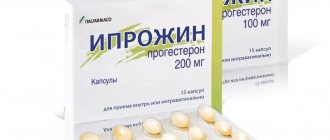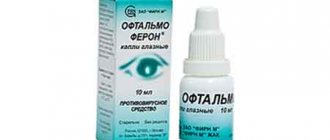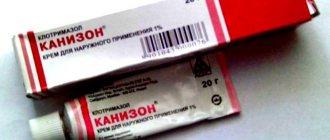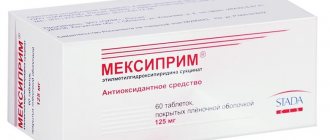Omal
The effect of omeprazole on the pharmacodynamics of other drugs
A decrease in the secretion of hydrochloric acid in the stomach during treatment with omeprazole can lead to a decrease or increase in the absorption of other drugs, the bioavailability of which is largely determined by the acidity of gastric juice
(including
posaconazole, erlotinib, ketoconazole, itraconazole, digoxin, iron supplements and cyanocobalamin).
Concomitant use of omeprazole with posaconazole
and
erlotinib.
With simultaneous use of atazanavir
and
nelfinavir with
omeprazole, a significant decrease in their plasma concentration may be observed; therefore, the simultaneous use of these drugs is not recommended.
Bioavailability of digoxin
when used simultaneously with omeprazole, it increases by 10%. Particular caution should be used when these drugs are used concomitantly in the elderly.
In a crossover clinical study, clopidogrel
(loading dose 300 mg, maintenance dose 75 mg per day) as monotherapy and in combination with omeprazole (80 mg per day simultaneously with clopidogrel) was used for 5 days.
At the same time, the bioavailability of the active metabolite of clopidogrel
decreased by 46% (day 1) and 42% (day 5), the level of inhibition of ADP-induced platelet aggregation decreased by 47% (day 1) and 0% (day 5) with simultaneous use of omeprazole and
clopidogrelated.
Another study found that the use of
clopidogrel
and omeprazole at different time points does not exclude their interaction, which is likely due to the inhibitory effect of omeprazole on the activity of the CYP2C19 enzyme.
Observational and clinical studies have provided conflicting data on the presence or absence of an increased risk of cardiovascular complications with the simultaneous use of omeprazole and clopidogrel.
When used simultaneously with omeprazole, it is possible to increase the plasma concentration and increase the half-life of warfarin
( R-warfarin)
and
other vitamin K antagonists, cilostazol, diazepam, phenyton,
as well as
other drugs
metabolized in the liver via the CYP2C19 isoenzyme (a dose reduction of these drugs may be required) .
When using omeprazole in patients receiving warfarin
or
other vitamin K antagonists,
careful monitoring of the international normalized ratio (INR) is necessary. In some cases, it may be necessary to reduce the dose of warfarin or another vitamin K antagonist. At the same time, in patients taking warfarin for a long time, co-administration of omeprazole at a dose of 20 mg once daily did not cause a change in coagulation time.
The use of omeprazole at a dose of 40 mg once daily in healthy volunteers led to an increase in Cmax and AUC of cilostazol
by 18% and 26%, respectively;
for one of the active metabolites of cilostazol,
the increase was 29% and 69%, respectively.
phenytoin
concomitantly, it is recommended to measure phenytoin plasma concentrations during the first two weeks after starting treatment with omeprazole. In some cases, a dose adjustment of phenytoin may be required. At the same time, in patients taking phenytoin for a long time, simultaneous use with omeprazole at a dose of 20 mg once a day did not cause a change in the concentration of phenytoin in the blood plasma.
Omeprazole, when used simultaneously, increases the plasma concentration of tacrolimus,
which may require dose adjustment.
It is necessary to monitor the concentration of tacrolimus
in the blood plasma, as well as measure creatinine clearance.
When used concomitantly with omeprazole, an increase in plasma concentrations of saquinavir/ritonavir
up to 70%, while treatment tolerance in patients with HIV infection does not deteriorate.
Some patients experienced increased concentrations of methotrexate
against the background of combined use with PPI.
When prescribing high doses of methotrexate,
the possibility of temporary withdrawal of omeprazole should be considered.
Omeprazole does not affect the metabolism of drugs metabolized by the CYP3A4 isoenzyme, such as cyclosporine, lidocaine, quinidine, estradiol, erythromycin
and
budesonide.
Effect of drugs on the pharmacokinetics of omeprazole
Concomitant use with inhibitors of CYP2C19 and CYP3A4 isoenzymes (such as clarithromycin, voriconazole)
may lead to an increase in plasma concentrations of omeprazole by slowing its metabolism.
Concomitant use of omeprazole and voriconazole
may result in an increase in the AUC of omeprazole by more than 2 times. As a rule, in such cases no dose adjustment of omeprazole is required, however, this may be required in patients with severe liver dysfunction and with long-term use of omeprazole.
Inducers of the CYP2C19 and CYP3A4 isoenzymes (for example, rifampicin, preparations of St. John's wort
( Hypericum perforatum )
can accelerate the metabolism of omeprazole, thereby reducing its concentration in the blood plasma.
No clinical interaction of omeprazole with antacids, theophylline, caffeine,
S-wafarin, piroxicam, diclofenac, naproxen, quinidine, lidocaine, propanol, metoprolol, ethanol has been established.
Directions for use and dosage of Amol
The use of Amol for symptoms of colds involves a dosage of 1 lozenge at a time. Lozenges must be dissolved until they are completely dissolved in the mouth.
The drug solution, which is taken orally, is usually consumed in two forms: it is mixed with liquid or dripped onto sugar in pieces. In the first case, 10-15 drops of Amol solution are added to 100 ml of plain water or tea. The same dosage of the drug is observed when taken with sugar.
Hot inhalations are also carried out using this medicine in the form of a solution. They help completely eliminate the symptoms of colds. To do this, add a solution of 1 teaspoon to 250 ml of hot water.
As for the external local use of Amol, this drug in the form of a solution is diluted with water in a ratio of 1 to 3. The resulting liquid is used to rub painful areas of the body. Often they are also covered with a bandage soaked in a solution.
Indications for use of Amol
According to the instructions for Amol, this drug in the form of lozenges is intended for the treatment of various colds, which are accompanied by the following main symptoms:
- Pain in the throat;
- Bronchitis;
- Nasal congestion;
- Runny nose;
- Cough;
- Hoarseness.
In accordance with the instructions for Amol, a solution of this drug is used in the following cases:
- Increased fatigue and overwork;
- Dizziness;
- General malaise;
- Circulatory disorders due to various diseases of the nervous system;
- Colds;
- Cardialgia;
- Migraine;
- Asthenia;
- Heaviness in the stomach;
- Insomnia.
The use of Amol in the form of a solution is also prescribed for headaches of various types. The drug helps to get rid of tension-type headaches, as well as chronic post-traumatic, vascular and drug-induced headaches.
Local rubbing with Amol alcohol solution is carried out to eliminate pain caused by the following diseases:
- Myalgia;
- Neuralgia;
- Rheumatism;
- Sciatica;
- Astralgia.
Contraindications
According to the instructions for Amol, this drug in the form of lozenges is not recommended for children under 4 years of age. Also, this dosage form should not be used by older children who cannot dissolve the lozenge on their own.
The use of Amol is contraindicated in cases of individual intolerance to one or more components included in the drug. Bandages soaked in Amol solution are not recommended to be applied to the face of newborn children, especially the child’s nose area. It should also be noted that it is necessary to avoid getting the solution into the eyes.
What diseases does it help with?
The drug has a therapeutic effect on a fairly wide range of diseases. First of all, it helps against inflammation caused by bacteria and viruses. Instructions for use of Amola recommend taking it for the following ailments:
- colds and runny nose of bacterial and viral origin;
- diseases of the upper respiratory tract, accompanied by cough and sore throat;
- rheumatism;
- pain in muscles and joints;
- lumbar acute pain (lumbago);
- neuralgia of the facial nerve;
- pain in the spine;
- headache;
- insomnia;
- general weakness.
The drug can be taken as an adaptogen during sudden changes in lifestyle and climate, as well as during fatigue.
Pharmacological properties of the drug
This drug is intended to increase the resistance of the human body. “Amol” also has an anti-inflammatory, local irritant (it can have a stimulating effect on nerve endings, which ultimately improves blood supply to tissues and relieves pain), disinfectant and antiseptic effects. The essential oils included in this drug can effectively relieve pain. Amola also contains vitamin C, which promotes rapid wound healing, improvement of hematopoietic processes, synthesis of collagen and some hormones, strengthening the human body’s immune system, as well as its protection from viruses and infections. In addition, vitamin C helps the body regulate metabolism, removes toxins from it, promotes the process of bile separation and restoration of the pancreas and thyroid glands. This drug is effective in eliminating the symptoms of colds and flu, and also significantly relieves sore throat and joint diseases.
Reviews about the medicine
Users note that the lozenges and solution cause virtually no side effects if you follow the instructions for using Amola. Reviews about the medicine are mostly positive. Many patients report that if they take this medication at the initial symptoms of a cold, their cough, runny nose, and sore throat disappear and never return. Elderly people write that compresses with tincture effectively relieve joint pain due to rheumatism.
Some users add a few drops of tincture to tea daily for preventive purposes. This helps them feel more energetic, get sick less, and better adapt to changes in the external environment.
Patients consider the only disadvantage of the drug to be its inaccessibility. As a rule, people buy Amol during trips abroad. But those who have taken the medicine note its effectiveness.
Storage conditions, price and analogues
The drug does not require special storage conditions and retains its medicinal properties for about 2 years. This shelf life is provided for in the instructions for use of Amola. It is difficult to determine the price of medicine in pharmacies. This product is produced and sold in Poland. It is almost impossible to purchase it in Russian pharmacy chains. Usually, medicine is purchased either while traveling to Poland, or ordered online from foreign pharmacies that deliver medicine to Russia. The price of the medicine is about 17 zlotys (approximately 272 rubles).
People often wonder if there is an analogue of this medicine among Russian drugs. "Amol" has a special composition consisting of essential oils of many plants. The uniqueness of this product lies in the combination of the healing properties of the ingredients. Unfortunately, a similar drug is not available in Russia.
Only Amol, made in Germany, can serve as a complete analogue. But it also cannot be found on wide sale. It is possible to order German “Amol” from online pharmacies that import medications from Germany. The price of medicine on such resources is quite high, about 3,000 rubles, since delivery from abroad is expensive.











